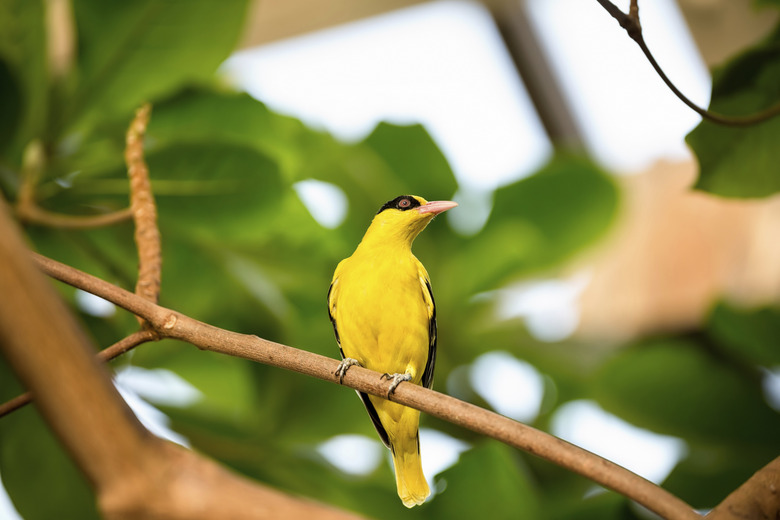How To Know If You Have A Male Or Female Canary
Unlike many birds, canaries are monomorphic. That means that males and females look essentially identical. In fact, distinguishing canary cocks from hens is so tricky that even experts sometimes make mistakes. For centuries, people have been breeding and crossbreeding these charming birds to create canaries of different colors. Among some purebreds, subtle differences in color may provide clues about gender. However, most sold in pet stores are "common" canaries of no particular breed, which further complicates the task of distinguishing boys from girls.
Males Often Have Better Singing Voices
Males Often Have Better Singing Voices
When you bring home young canaries, you might have to wait until they pass the 6-month age mark and are ready to breed before you have any hope of establishing gender. When sexing canaries, even most breeders speak in terms of tendencies rather than certainties. Except during molting season, when the birds devote most of their energy to growing new feathers, they vocalize. Though cocks tend to have more melodious singing voices than hens, you can't determine gender by sound: Some cocks are strong, silent types; some hens love belting out a good tune. If you want to determine the likely gender of your canaries, say Fife canary breeders Peter Ailwooda and James Hart, in spring, put your birdcage in direct sunlight. Unless he's "unfit or just stubborn," within minutes, a healthy male should break into song.
Subtle Differences in Appearance
Subtle Differences in Appearance
Canaries come in a variety of colors, but Brian Keenan, president of the U.K.'s Yorkshire Canary Club, says males tend to be "slightly" brighter, larger and more boisterous than females. Unfortunately, though, these differences are so subtle that only an experienced person would be apt to pick up on them, Keenan admits. German Roller canary breeder Johannes Clauss says that among yellow canaries, cocks "generally" have stronger coloring and stand taller on the perch than hens. Another distinction, which Clauss calls "the surest of them all" but is still less than foolproof, is that the eyes of canary hens sit a tiny bit higher on the head than those of cocks.
Genital Differences Between Males and Females
Genital Differences Between Males and Females
Throughout most of the year, the cloacae or "vents" on the underbellies of male and female canaries appear identical, but during the summer breeding season, if you look closely, you might notice a difference in shape. When you hold a bird gently in your hand and blow on the feathers covering the vent area enough to expose the skin, a cock's vent will appear elongated and prominent while a hen's will be rounder and flatter. But your timing is important; the difference in shape will be evident only at the peak of the breeding season and maybe not even then. Of course, an egg-laying canary is definitely female, but if an egg appears while you have two birds in a cage, you can't take for granted that one is male — because hens don't require assistance from cocks to generate infertile eggs.
Sexing Techniques Used by Vets
Sexing Techniques Used by Vets
If you really want to know the gender of your canary and haven't been able to figure it out any other way, the Animal Health Care Center of Arlington, Texas, recommends a test requiring only a drop of the bird's blood. A lab analysis can make a positive ID based on the presence of male or female chromosomes in the blood sample. Another sexing technique used by avian vets involves anesthetizing the bird, making a tiny incision in the abdomen and inserting an arthroscope. Hens have a single ovary; cocks have two testes.
Sexing Tips from Canary Breeders
Sexing Tips from Canary Breeders
Some breeders think you don't need avian vets to confirm the genders of canaries. According to Johannes Clauss, back in the heyday of German Roller canary breeding in the late 19th and early 20th centuries, old masters used a technique that over time was forgotten but still works. If you align a straight pin precisely with the line where the upper and lower halves of the beak meet, in hens, the entire eye will be above it, while in cocks, the line passes through the eye. James Anagnos's "100 percent foolproof" system involves baby birds just starting to sprout feathers. If you tap the nest with your finger, he claims, males will drop their heads down and stick their backsides in the air while females do nothing except look at you.
References
- Western Roller Canary Association: Differences Between the Sexes of the Harz Roller (Sexing the Roller)
- LafeberVet.com: Avian Medicine List: Basic Information Sheet for the Canary
- Beauty of Birds: Sexing the Canaries
- Duncan McGinness Veterinary Surgeon: Surgical Sexing Birds
- Cage & Aviary Birds: How Do You Sex Canaries?
- BirdChannel.com: Will Two or More Canaries Get Along?
